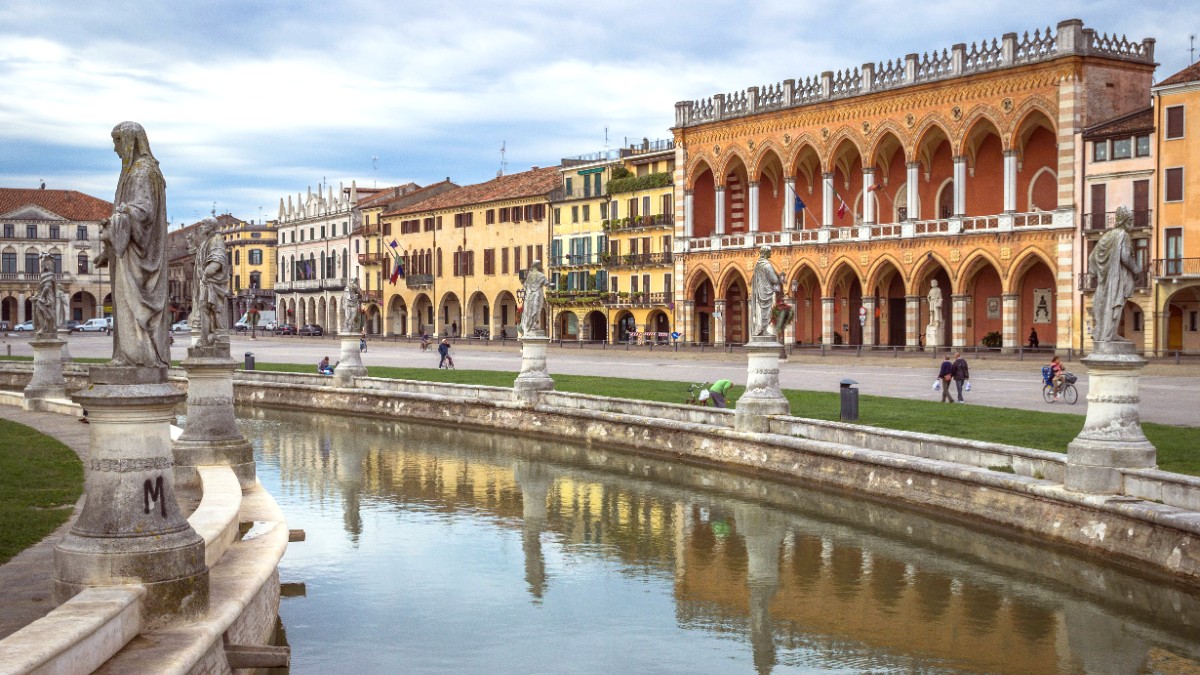
The Veneto, Italy
Paduan cuisine is deeply rooted in the fertile Veneto plain, drawing heavily on seasonal local produce. Its history as a major university city and a trading hub along Venetian routes also shaped its culinary identity. While sharing many similarities with Venetian cuisine, Padua boasts its own distinctive specialties. Historically, goose and horse meat feature in traditional dishes, portraying the region's farming practices.
Rice and polenta remain staple carbohydrates, complementing various meats, vegetables, and freshwater fish from local rivers and lagoons.
A specific rice variety, widely present in creamy risottos, a cornerstone of Paduan meals.
Especially the prized Radicchio di Treviso or Chioggia, a slightly bitter chicory in risottos, salads, and cooked vegetable dishes.
Pork, beef, duck, and goose are frequent. Historically, horse meat remains a distinctive local tradition. Freshwater fish from local rivers and seafood from the nearby Adriatic coast appear on menus.
Thick, whole wheat pasta served with a rich, savory duck meat sauce.
A true Paduan specialty. Enjoy this in traditional trattorias throughout the city.
A creamy risotto with pork loin, beef, and a hint of cinnamon.
This recipe from Isola della Scala is a prominent dish in Paduan cuisine.
Whipped salted cod, creating a light and creamy spread. Often served as an appetizer.
A Venetian classic found in Padua, often with grilled polenta.
Italian ice cream, a beloved dessert. Seek artisanal "gelaterie" for high quality.
A layered dessert with coffee-soaked ladyfingers, mascarpone cheese, and cocoa. A prominent dessert in Veneto.
Padua offers varied dining experiences for every budget and occasion.
Le Calandre (Rubano, near Padua): One of Italy's most celebrated restaurants, holding 3 Michelin stars. A sophisticated, innovative culinary journey awaits. Reservations are essential and often necessary months in advance. La Montecchia (Selvazzano Dentro, near Padua): A 1-Michelin-star restaurant, presenting refined traditional cuisine in a charming setting. Amo (Padua city center): This restaurant crafts modern Italian cuisine with a focus on seasonal ingredients.
Padua has many traditional trattorias and osterias throughout the historic center. These places offer authentic Paduan and Venetian cuisine at fair prices. Look for "cucina tipica" signs to discover regional specialties. Many provide daily "menu fisso" (fixed-price menus) for lunch, presenting good value.
Mercato Sotto il Salone: A culinary gem selling prepared foods, gourmet sandwiches ("panini"), and local specialties. Perfect for a budget-friendly lunch. Pizzerias: Authentic and affordable pizza is widely found across the city. Seek a "pizzeria" sign for traditional Neapolitan-style pizzas. Local Bars: Present coffee and drinks, plus a selection of tramezzini, cicchetti, and pastries. Ideal for a quick bite.
Mercato Sotto il Salone: A permanent indoor food market directly under the Palazzo della Ragione. It presents gourmet products, artisanal cheeses, quality cured meats, and small eateries.
Here, you taste local delicacies.
While local cuisine is highly commended for a true experience, international food options are present, especially near the university. These cater to the diverse student population.
Seek out various global tastes around town.
Do not pick a table immediately.
Note 'coperto' and 'servizio'.
Espresso at bar, cappuccino for breakfast.
Aperitivo is a social time.
"Senza glutine" awareness is growing in Italy. Many pizzerias now present gluten-free crusts. Larger supermarkets carry gluten-free products.
Directly communicate specific allergies.
Carry an allergy translation card in Italian to convey your needs to restaurant staff.
The Associazione Italiana Celiachia (AIC) lists certified gluten-free restaurants.
Research restaurants beforehand using online reviews and menus.
Seek apps and online resources to navigate dietary restrictions in Padua.
Beyond dining, Padua holds engaging culinary experiences that deepen your appreciation for Italian food culture.
Local culinary schools or private chefs in Padua conduct cooking classes. These often concentrate on Venetian or Paduan cuisine, teaching you to prepare dishes like fresh pasta, risotto, or tiramisù.
Food tours guide you through local markets and tastings at various eateries. They give insights into local food culture, history, and ingredients.
Many agriturismi in the Euganean Hills present farm tours, wine tastings, and olive oil production tours. This creates a chance to see where local ingredients originate and sample them directly.
A spring highlight, appearing in risottos, pasta dishes, and as a side. From nearby Bassano del Grappa.
Enjoy fresh and local in season.
Especially in autumn and winter, used in various cooked dishes. The prized Radicchio di Treviso or Chioggia.
A versatile and flavorful chicory.
Asiago, Grana Padano, and Montasio feature prominently in local recipes and cheese boards.
Rice (Vialone Nano) and Polenta are common, complementing meats, vegetables, and fish.
Olive oil and butter are common cooking fats, alongside fresh herbs that provide aromatic depth to dishes.
Paduan cuisine offers a harmony of tradition and local bounty, where every dish tells a story of the land and its people.